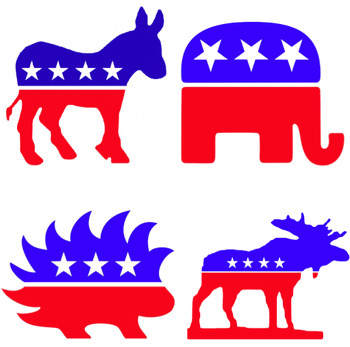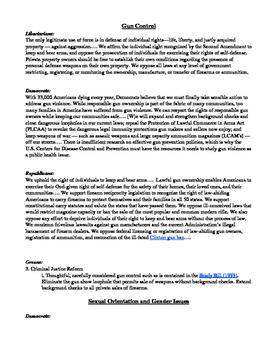2020 Political Party Platform Comparisons
- Zip
What educators are saying
Description
I'm excited to release an updated version of my party platforms assignment, featuring the platforms that were adopted during the 2020 election year! My previous assignment of excerpts from the 2012 and 2016 political party platforms (this is a free download if you want to sample it) were big hits, and the 2020 election produced... SOME new documents for me to use!
IMPORTANT NOTE FOR 2020 PLATFORMS
As with all things in 2020, party platforming wasn't the same as it used to be. The GOP and the Libertarian parties decided not to adopt a new platform, citing the disrupted national conventions because of the pandemic. Both of these parties instead chose to readopt their 2016 platforms. For the Libertarians, their platform rarely changes in significant ways. For the GOP, this provided some oddities that you may need to clarify for your students. For example, the GOP platform occasionally criticizes "the current administration" for its failings. This would, of course, have been referring to the Obama administration and not the Trump administration. Your students may not think anything of it, but I wanted to include that disclaimer in case they notice and ask about it. Otherwise, if you've used this activity in the past you should find it much the same this time around!
Students are provided with excerpts from the platforms adopted at the national conventions of the Republican, Democrat, Libertarian, and Green Parties. They are also given a worksheet (adaptable by the instructor for group-work, whole-class discussion, individual work, etc) to compare and contrast the viewpoints of the parties and provides an opportunity for students to examine their own views. As a bonus for the 2016 platforms, I've included a second worksheet with a format optimized for using in Google Classroom. Use whichever version suits your needs!
I spent HOURS going through the party platforms to cut them down to a size that would be accessible to students. There is plenty of material to work with here, too! I usually assign this kind of thing in one fell swoop, but I think I may split it up into smaller chunks to keep the students' interest. Each category will provide information for fruitful discussions and debates.
If you have feedback on topics or categories your students would be interested in exploring more than what's on the list below, please let me know in your feedback! If there are pressing issues in the next election that you'd like to have a comparison among the parties, I will update the assignment accordingly!
Categories from the platforms include:
Gun Control
Sexual Orientation and Gender Issues
Abortion
Drugs
Immigration
Privacy
Taxes
Healthcare
And more!
It's a great way to engage Civics and Government students and to get them to look at the parties for themselves (rather than trusting sound bites from others).
Keywords: US Government; APGOV; AP Government; Civics; US History; Election; President; Campaigns; Political Parties; 2016 Election; Debate; Discussion; DBQs




